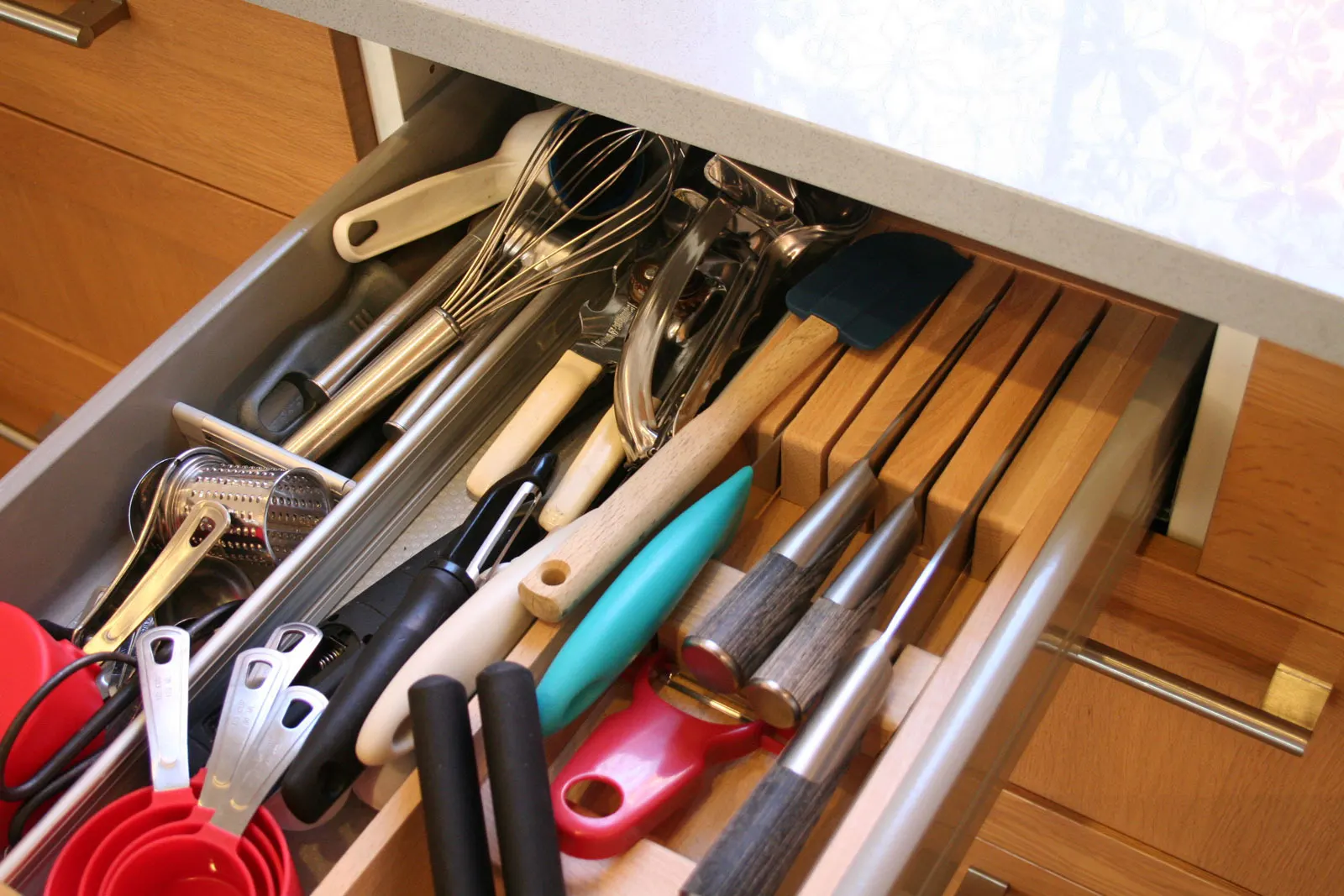

Articles
How To Store Cooking Utensils
Modified: January 19, 2024
Learn how to properly store your cooking utensils with these helpful articles. Find tips and tricks to keep your kitchen organized and clutter-free.
(Many of the links in this article redirect to a specific reviewed product. Your purchase of these products through affiliate links helps to generate commission for Storables.com, at no extra cost. Learn more)
Introduction
Having the right cooking utensils is essential for any home chef, but keeping them organized and easily accessible can sometimes be a challenge. Whether you have a small kitchen with limited storage space or simply want to optimize your current setup, finding the ideal storage solution for your cooking utensils is key.
In this article, we’ll explore various strategies and creative ideas to help you store your cooking utensils efficiently. From drawer organizers to hanging racks and wall-mounted storage solutions, there’s a method to suit every kitchen layout and personal preference.
By implementing these storage techniques, you can not only free up valuable counter space but also ensure that your utensils are neatly organized and ready to use whenever you need them. So, let’s get started on transforming your kitchen into a well-organized culinary haven!
Key Takeaways:
- Efficiently store cooking utensils by decluttering, sorting, and utilizing drawer organizers, hanging racks, or wall-mounted solutions. Keep utensils accessible and maintain them for a well-organized and visually appealing kitchen.
- Transform your kitchen into a clutter-free culinary haven by implementing creative storage solutions and maintaining utensils for optimal hygiene and longevity. Enjoy efficient cooking in a stylish and functional space.
Read more: How To Organize A Kitchen Utensil Drawer
Finding the Ideal Storage Space
Before diving into specific storage solutions, it’s important to assess your kitchen and determine the available space for storing your cooking utensils. Take a look at your cabinets, drawers, walls, and even countertops to identify potential areas that can be utilized efficiently.
If you have spacious drawers, that could be an excellent option for storing your utensils. However, if your drawers are already full or too small, consider utilizing vertical wall space or hanging racks to maximize storage capacity. Additionally, assess your countertop and determine if there’s enough space to incorporate any countertop storage solutions.
Keep in mind that accessibility is key when choosing the ideal storage space. You want your utensils to be easily reachable while you’re cooking, so consider placing them near your stove or prep area for seamless functionality.
Once you’ve identified the ideal storage space, it’s time to sort and organize your cooking utensils.
Sorting and Organizing Cooking Utensils
Before you start putting your cooking utensils away, it’s important to sort through them and declutter any items that you no longer use or need. This will help you streamline your storage and ensure that you’re only keeping the essentials.
Begin by emptying out all your cooking utensils onto a clean and spacious workspace. Take this opportunity to assess the condition of each utensil and discard any that are damaged or no longer functional. Additionally, consider whether there are any duplicate utensils that can be donated or given to someone who might need them.
Once you’ve sorted through your utensils, it’s time to organize them in a way that makes sense and maximizes efficiency. Here are a few methods you can consider:
- Grouping by Function: Arrange your utensils into groups based on their function. For example, place all your spoons together, all your spatulas together, and so on. This will make it easier to find the utensil you need at any given time.
- Size-Based Organization: Another option is to organize your utensils by size, placing the largest ones at the back and the smaller ones at the front. This will create a visually appealing arrangement and make it easier to access the utensils.
- Separate Containers: Utilize separate containers or dividers within your storage space to keep similar utensils together. You can use small bins or trays to create designated sections for different types of utensils.
By sorting and organizing your cooking utensils, you’ll not only create a tidy and efficient storage space but also make it easier to find the utensil you need when you’re in the midst of cooking.
Utilizing Drawer Organizers
Drawer organizers are a fantastic storage solution for keeping your cooking utensils neatly arranged and easily accessible. They come in various sizes and designs, allowing you to customize your drawer space according to your specific needs.
Start by measuring the dimensions of your drawer to ensure that you choose organizer inserts that fit snugly inside. You can find drawer organizers made of materials like bamboo, plastic, or metal, each offering its own set of advantages.
Once you have your organizers, begin arranging your utensils within each section based on your sorting method. For example, you can use one section for spoons, another for spatulas, and so on. This will prevent your utensils from mingling together and creating a disorganized mess.
Drawer organizers not only keep your utensils in order, but they also protect them from damage. The compartments prevent items from bumping into each other, reducing the risk of scratches or breakage.
Remember to arrange the organizers in a way that allows you to easily see and reach for the utensils without having to dig through the entire drawer. This will save you time and frustration when you’re in the middle of cooking.
Utilizing drawer organizers is an efficient and space-saving solution for storing your cooking utensils. By keeping everything neatly arranged, you’ll never have to search for a specific utensil again.
Hanging Utensil Racks
If you have limited drawer space or simply prefer to have your cooking utensils within easy reach, hanging utensil racks are a great storage solution. They not only free up valuable countertop space but also add a touch of visual interest to your kitchen.
There are various types of hanging racks available, allowing you to choose one that suits your kitchen’s style and layout. Here are a few popular options:
- Pot Racks: Pot racks are typically mounted on the ceiling or wall, providing ample space to hang not just pots and pans but also cooking utensils. They create a rustic and industrial look in the kitchen and keep your utensils conveniently within arm’s reach.
- Bar Racks: Bar racks are horizontal rods that can be mounted on the wall or underneath a cabinet. You can hang S-hooks or other hanging utensil holders from the bar, creating a customizable storage setup for your utensils.
- Pegboards: Pegboards are versatile and inexpensive solutions for hanging utensils. They consist of perforated boards that can be mounted on a wall, allowing you to insert pegs to hang your utensils. The pegs can be easily rearranged to accommodate different utensils or adjust the layout as needed.
To hang your utensils on these racks, you can use various hanging hooks, S-hooks, or even repurpose items like shower curtain rings or binder clips. Be sure to choose hooks or clips strong enough to hold the weight of your utensils securely.
When arranging your utensils on hanging racks, follow a logical order that makes sense for your cooking workflow. Consider grouping similar utensils together and placing frequently used ones in easily accessible locations.
Hanging utensil racks not only provide practical storage but also add a decorative element to your kitchen. They allow you to showcase your collection of utensils and can serve as a focal point that adds charm and character to your space.
Store cooking utensils in a utensil holder or crock on the countertop for easy access, or hang them on a wall-mounted rack to save space and keep them organized.
Wall-mounted Storage Solutions
If you’re looking for a storage solution that saves counter space and provides a unique design element, wall-mounted storage options for your cooking utensils may be the perfect choice.
There are various types of wall-mounted racks or shelves that can be specifically designed for storing utensils. These include:
- Shelves with Hooks: Wall-mounted shelves with hooks offer a versatile solution for storing utensils. You can place your utensils on the shelf while utilizing the hooks to hang items like ladles, tongs, or whisks. This way, you have both the convenience of having your utensils within reach and the additional storage space provided by the shelf.
- Mounted Containers: You can also consider attaching containers or buckets to the wall to hold your utensils. This can be done by using brackets or hooks to hang the containers at a convenient height. It’s a practical and visually appealing way to store your utensils while keeping them organized and easily accessible.
- Pegboard Wall Panels: Similar to pegboards mentioned earlier, pegboard wall panels are larger-sized panels that can cover a significant portion of the wall. These panels have holes or perforations where you can insert pegs to hang your utensils. This option allows you to customize the arrangement of your utensils and easily switch them around as needed.
When choosing a wall-mounted storage solution, consider the available wall space in your kitchen and how it will complement your overall kitchen design. You want the storage solution to be functional while also enhancing the aesthetics of your space.
Before installing any wall-mounted storage solution, ensure that you have the proper tools and hardware to securely mount it on the wall. Follow the manufacturer’s instructions for installation and make sure it is sturdy enough to hold the weight of your utensils.
Wall-mounted storage solutions can transform your kitchen walls into functional and stylish storage areas for your cooking utensils. It’s a creative way to utilize vertical space and keep your utensils organized within arm’s reach.
Using Magnetic Strips
Magnetic strips are a clever storage solution for your cooking utensils, especially ones with metal handles or magnetic properties. These strips are typically made of strong magnets and can be easily mounted on a wall or the inside of a cabinet door.
Here’s how you can make the most of magnetic strips for utensil storage:
- Choose the Right Magnetic Strip: Look for magnetic strips that have a high enough magnetic strength to securely hold your utensils. Consider the length and width of the strip to ensure it can accommodate the number of utensils you have.
- Mount the Magnetic Strip: Determine the best location for your magnetic strip. It could be on the wall near your cooking area or inside a cabinet door for a more discreet storage solution. Use screws, adhesive, or mounting brackets provided by the strip manufacturer to securely attach it to the desired surface.
- Arrange Your Utensils: Once the magnetic strip is mounted, arrange your utensils by placing the metal part or the magnetic end against the strip. Ensure they are evenly spaced to prevent them from clumping together.
The beauty of using magnetic strips is the ease and accessibility they provide. Your utensils will be displayed in a visually appealing way, and you can easily grab the utensil you need when cooking.
Keep in mind that not all utensils may be suitable for magnetic strips, especially those made of materials like wood or silicone. However, for utensils with metal components, such as knives, spatulas, or metal ladles, magnetic strips are a convenient and space-saving storage solution.
Before installing the magnetic strip, ensure that the surface is clean and dry. Additionally, make sure the strip is securely fastened and that the magnets are strong enough to hold the weight of your utensils.
Using magnetic strips is a practical and innovative way to store your cooking utensils. It eliminates the need for extra drawer or countertop space and keeps your utensils organized and easily accessible.
Storing Utensils in Jars or Canisters
If you’re looking for a budget-friendly and stylish storage solution for your cooking utensils, storing them in jars or canisters can be a great option. Not only does it keep your utensils organized, but it also adds a touch of charm to your kitchen decor.
Here’s how you can make the most of jars or canisters for utensil storage:
- Select the Right Containers: Choose jars or canisters that are large enough to hold your utensils comfortably. Consider the height and diameter of the containers to ensure they can accommodate various utensil sizes and shapes. You can opt for glass jars, tin cans, or even vintage-inspired ceramic canisters for a more aesthetic appeal.
- Clean and Decorate the Containers: Before using the containers, ensure they are thoroughly cleaned and dried. Remove any labels or stickers and ensure the interior is free from any residues. If desired, you can also customize the containers by painting or decorating them to match your kitchen theme or color scheme.
- Arrange Your Utensils: Once your containers are ready, arrange your utensils inside them based on your sorting preference. Mix and match different sizes and types of utensils to create an interesting display. You can also use small dividers or inserts to keep the utensils separate and upright inside the containers.
- Placement and Accessibility: Decide where you want to place the jars or canisters in your kitchen. You can keep them on the countertop, near your cooking area, or even on floating shelves for a more decorative touch. Ensure they are easily accessible while you’re cooking and that they don’t obstruct any other essential kitchen tasks.
Storing utensils in jars or canisters not only keeps them organized but also adds a rustic and charming element to your kitchen decor. It’s a simple and affordable storage solution that can work in any kitchen style.
Remember to periodically check the jars or canisters for cleanliness and make sure the utensils are properly dried before placing them back inside. This will help prevent any moisture buildup or potential damage to your utensils.
Whether you opt for clear glass jars, vibrant tin cans, or vintage ceramic canisters, storing your utensils in containers is a practical and visually appealing storage solution.
Properly Cleaning and Maintaining Utensils
Keeping your cooking utensils clean and well-maintained not only ensures their longevity but also promotes proper hygiene in the kitchen. Here are some essential tips for cleaning and maintaining your utensils:
- Hand Wash vs. Dishwasher: Check the manufacturer’s recommendations for each utensil to determine if it is dishwasher-safe. Some utensils, especially those made of wood or with delicate finishes, may require hand washing to prevent damage. Metal and heat-resistant utensils are usually safe to be cleaned in the dishwasher.
- Use Gentle Cleansers: When hand washing utensils, use a mild dish soap and warm water. Avoid using harsh abrasives or scouring pads that can scratch the surfaces. For stubborn stains, soak the utensils in warm soapy water before gently scrubbing with a soft sponge or brush.
- Dry Thoroughly: After washing, make sure to dry the utensils thoroughly before storing them. Moisture can cause rust or promote bacterial growth. Use a clean dish towel or air-dry the utensils on a drying rack. Ensure that wooden utensils are thoroughly dried to prevent warping or molding.
- Polish Metal Utensils: For metal utensils that have lost their shine, you can restore their luster by using a metal polish. Apply the polish according to the product instructions, then rinse and dry the utensils. This helps to remove tarnish and keeps the metal looking new.
- Oil Wooden Utensils: To maintain the quality and prevent drying or cracking, regularly oil wooden utensils with food-grade mineral oil or a specialized wood conditioning oil. Apply a thin layer and let it absorb overnight, then wipe off any excess oil before using the utensils again.
- Separate Utensils: When storing utensils, make sure they are not packed tightly together. This prevents damage or scratching caused by friction. Use dividers or separate compartments within drawers or containers to keep each utensil in its place.
- Inspect Regularly: Periodically check your utensils for any signs of damage, such as loose handles or worn-out surfaces. Replace any utensils that are no longer safe or functional to use. Regular inspection helps ensure that your utensils are in good condition and ready for use.
By following proper cleaning and maintenance practices, you can prolong the lifespan of your utensils and ensure optimal kitchen hygiene. Regular care and attention will keep your utensils looking their best and ready to assist you in your culinary endeavors.
Read also: 13 Best BBQ Utensils for 2025
Conclusion
Choosing the right storage solution for your cooking utensils is vital for keeping your kitchen organized, functional, and visually appealing. Whether you have a small kitchen with limited space or simply want to optimize your current setup, there are several creative and practical options available.
In this article, we explored various storage solutions for cooking utensils, including drawer organizers, hanging racks, wall-mounted storage options, magnetic strips, and storing utensils in jars or canisters. Each method has its own unique advantages and can be tailored to suit your kitchen layout, personal preference, and decorative style.
Remember to declutter and sort your utensils before implementing any storage solution. Group similar utensils together and arrange them in a way that makes sense for your cooking workflow. This will ensure that your utensils are easily accessible and minimize any disruptions while you’re in the midst of preparing a delicious meal.
Properly cleaning and maintaining your utensils is equally important to promote hygiene and prolong their lifespan. Be sure to follow the manufacturer’s instructions for cleaning and drying, and periodically inspect your utensils for any signs of damage or wear.
By implementing these storage solutions and keeping your utensils clean and well-maintained, you can transform your kitchen into a well-organized and efficient space. Not only will you save valuable counter and drawer space, but you’ll also enhance your cooking experience and enjoy the pleasure of working in a clutter-free environment.
So, go ahead and explore the storage solutions discussed in this article. Choose the method that resonates with you, get creative, and make your cooking utensils a functional and stylish part of your kitchen. Happy cooking!
Frequently Asked Questions about How To Store Cooking Utensils
Was this page helpful?
At Storables.com, we guarantee accurate and reliable information. Our content, validated by Expert Board Contributors, is crafted following stringent Editorial Policies. We're committed to providing you with well-researched, expert-backed insights for all your informational needs.
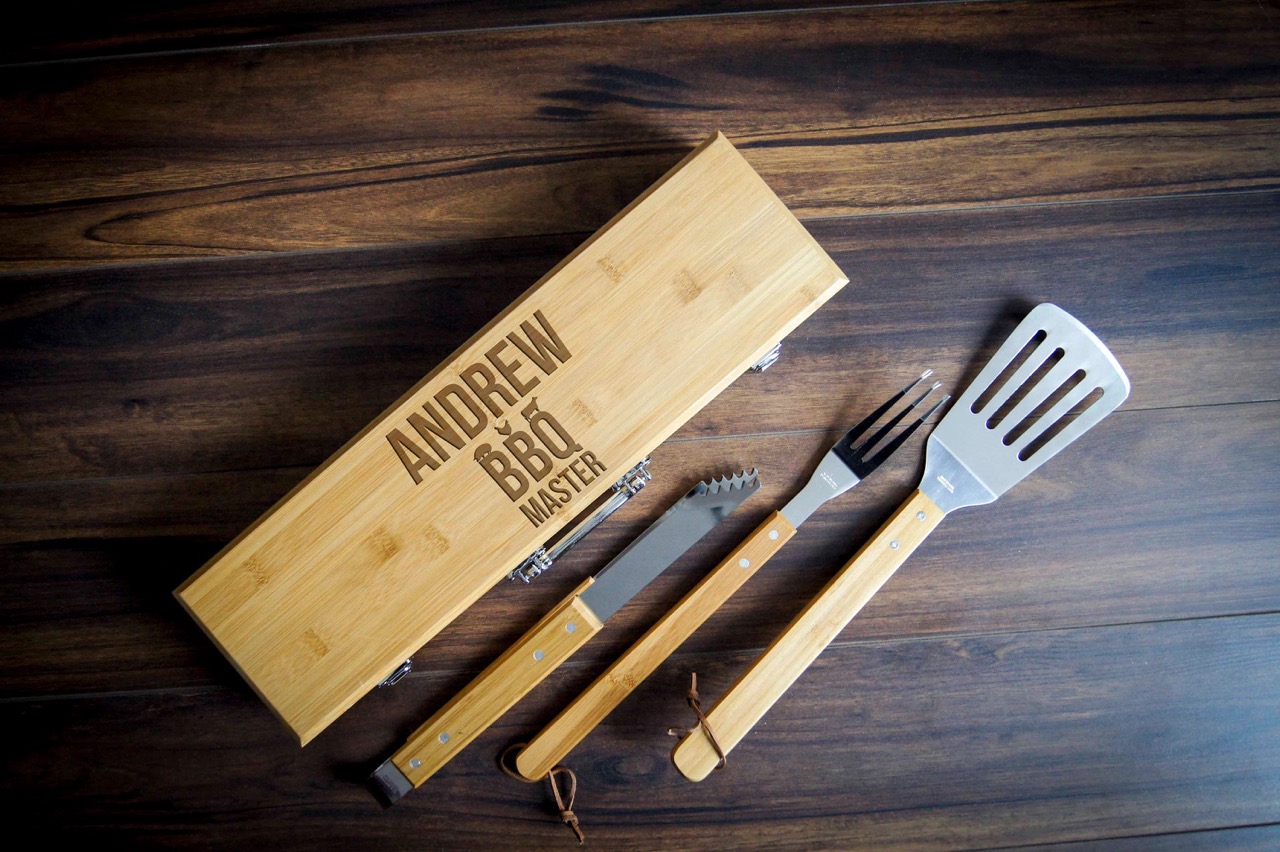
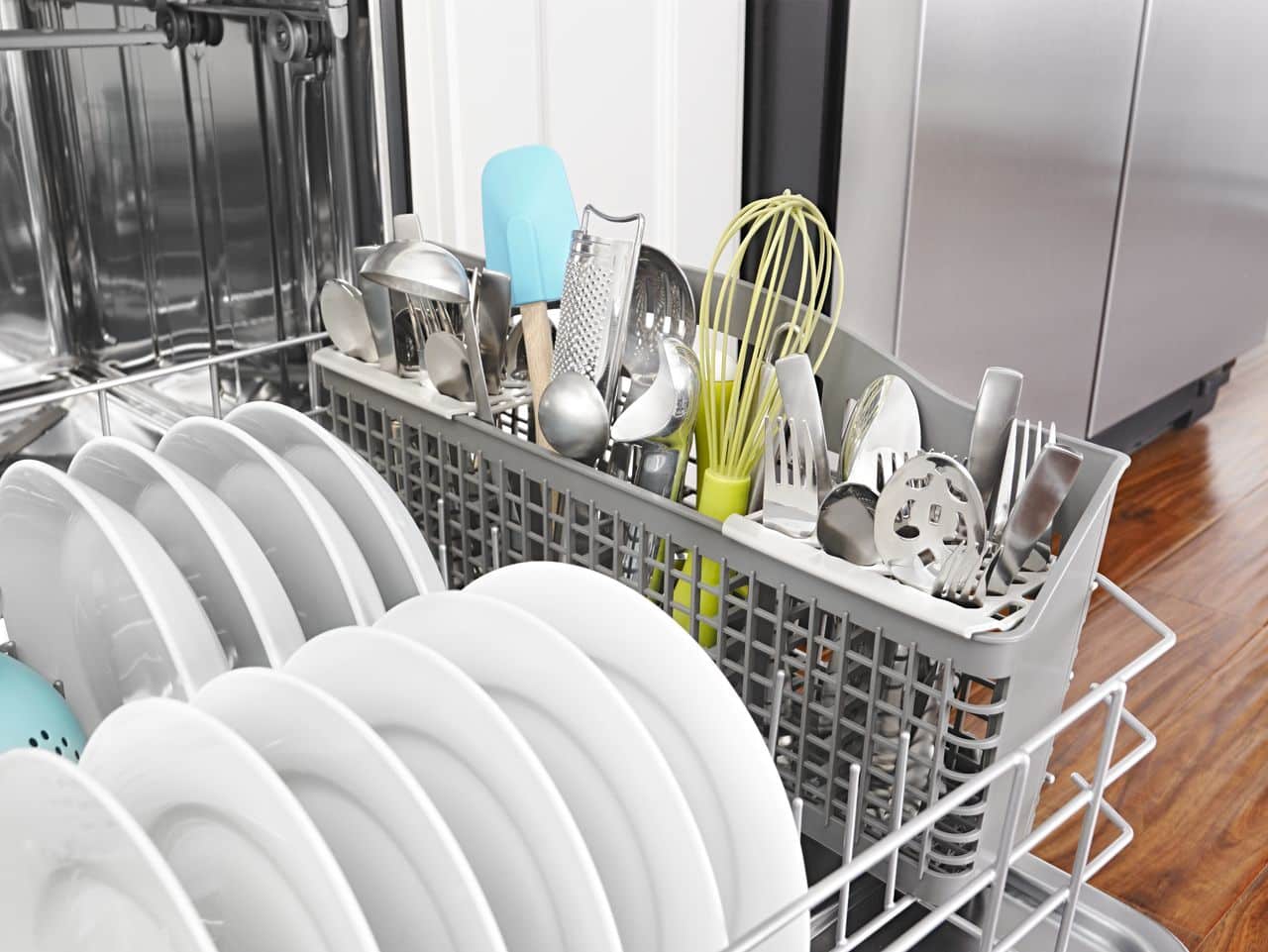
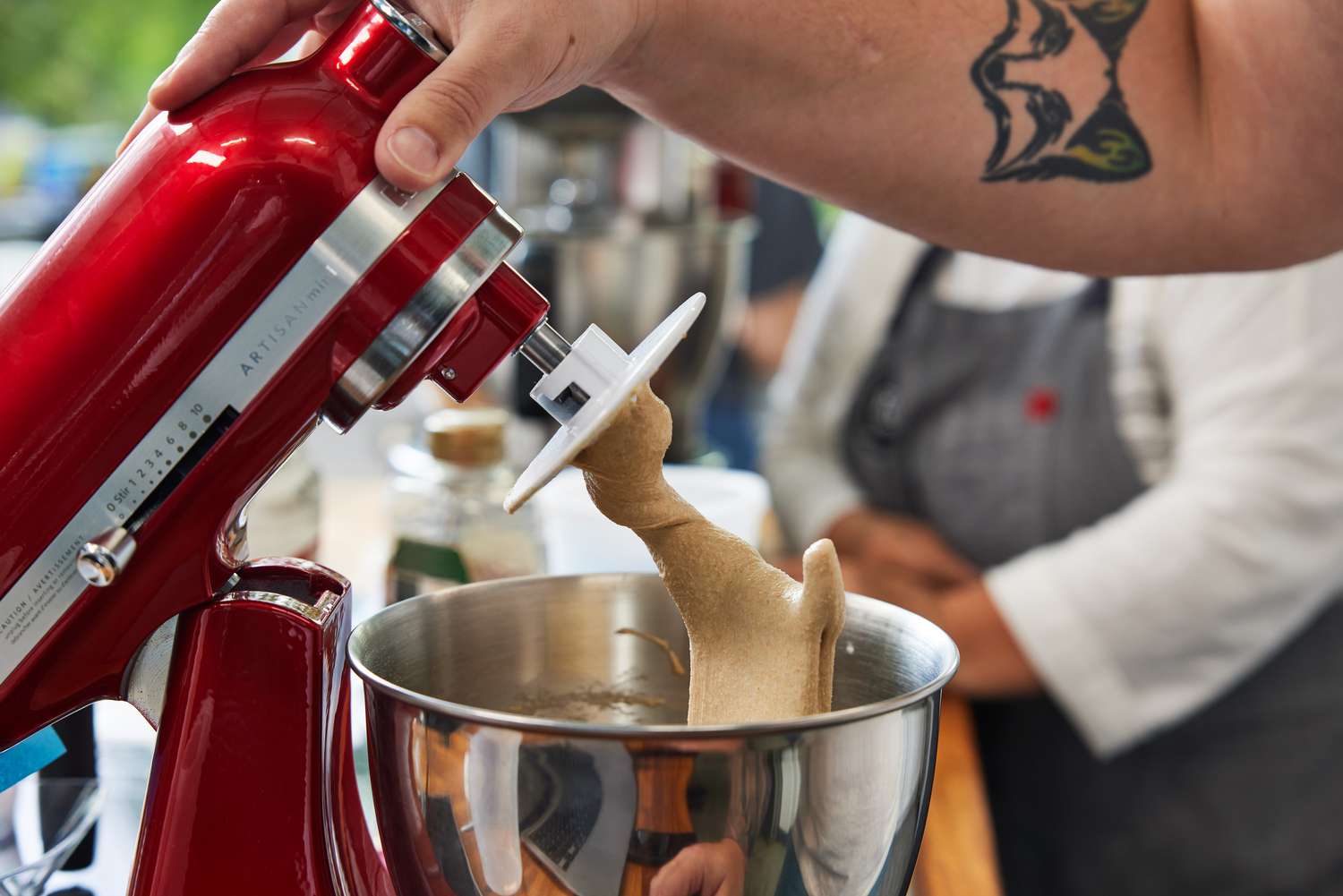
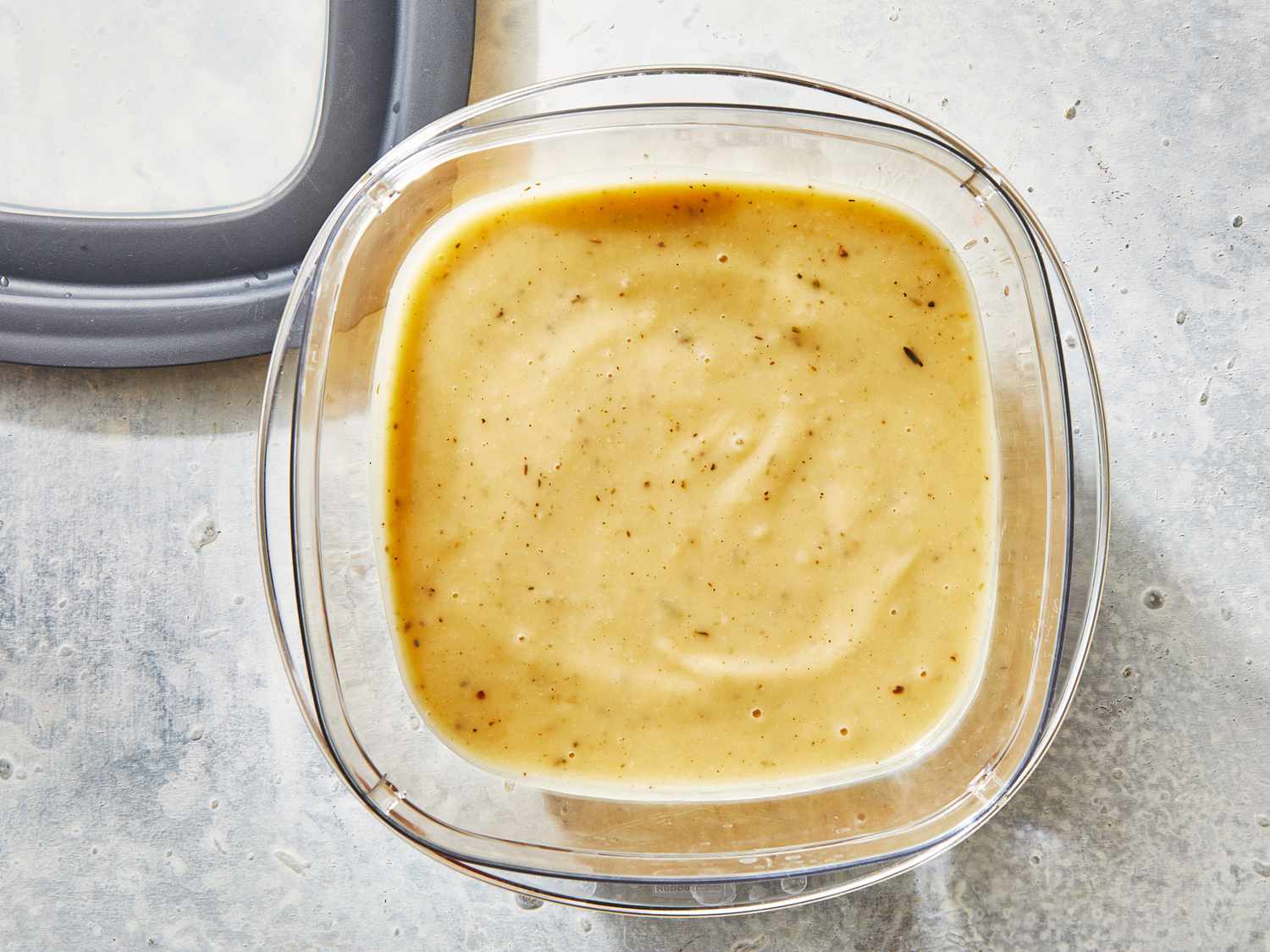
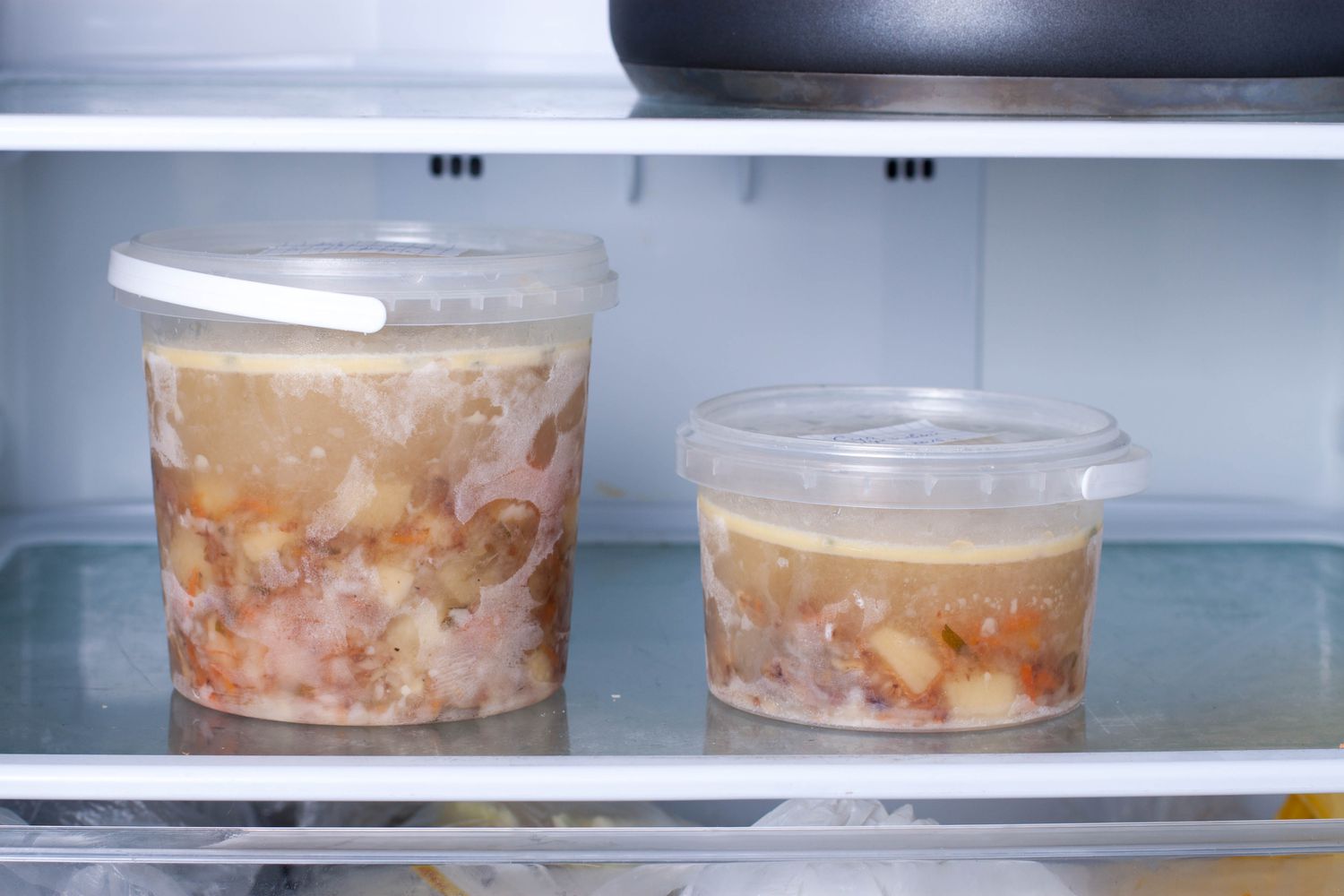
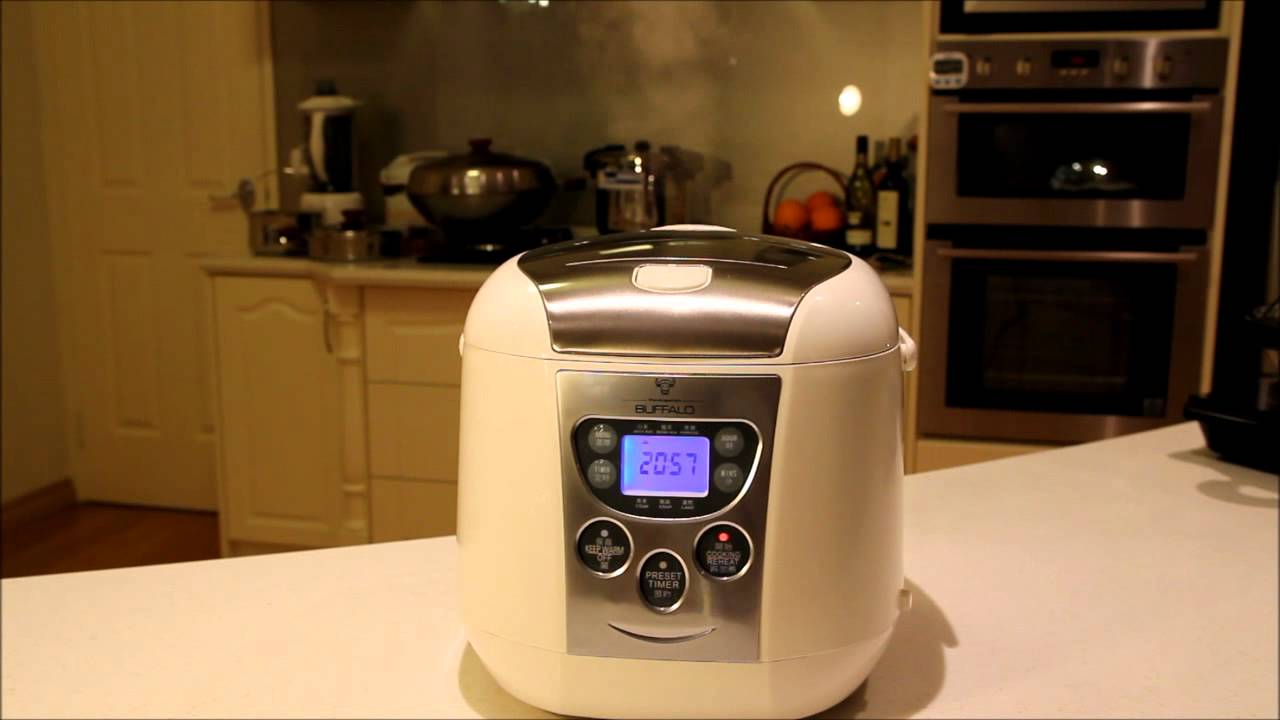
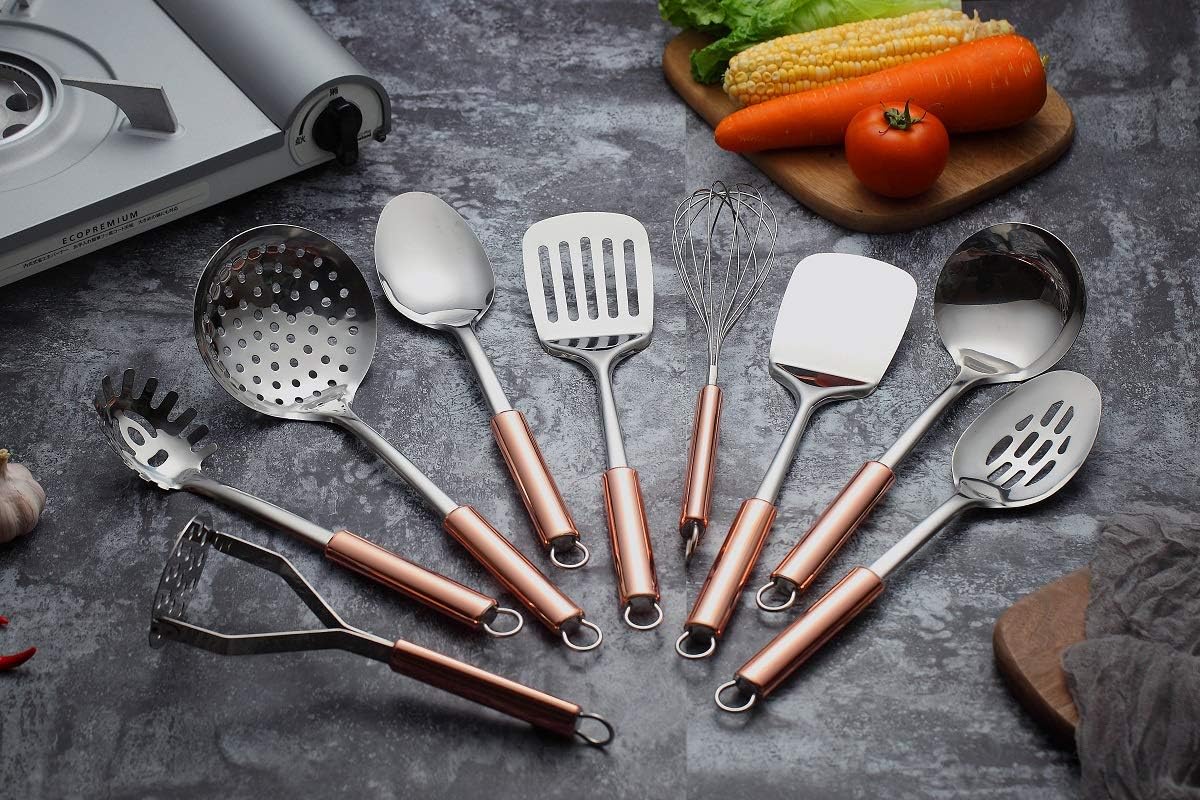
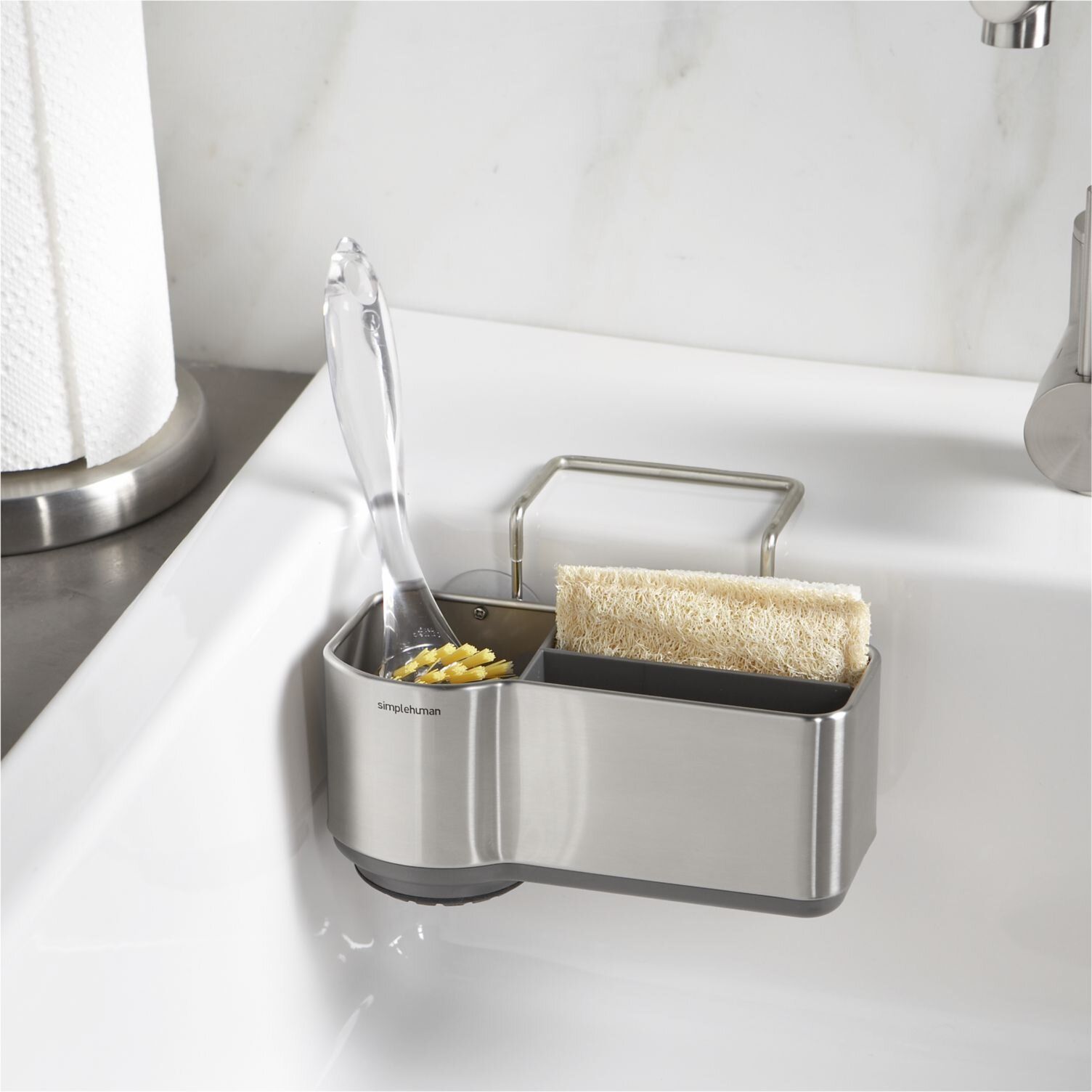
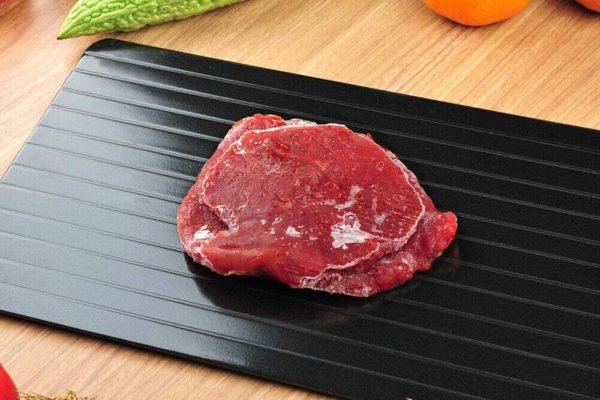
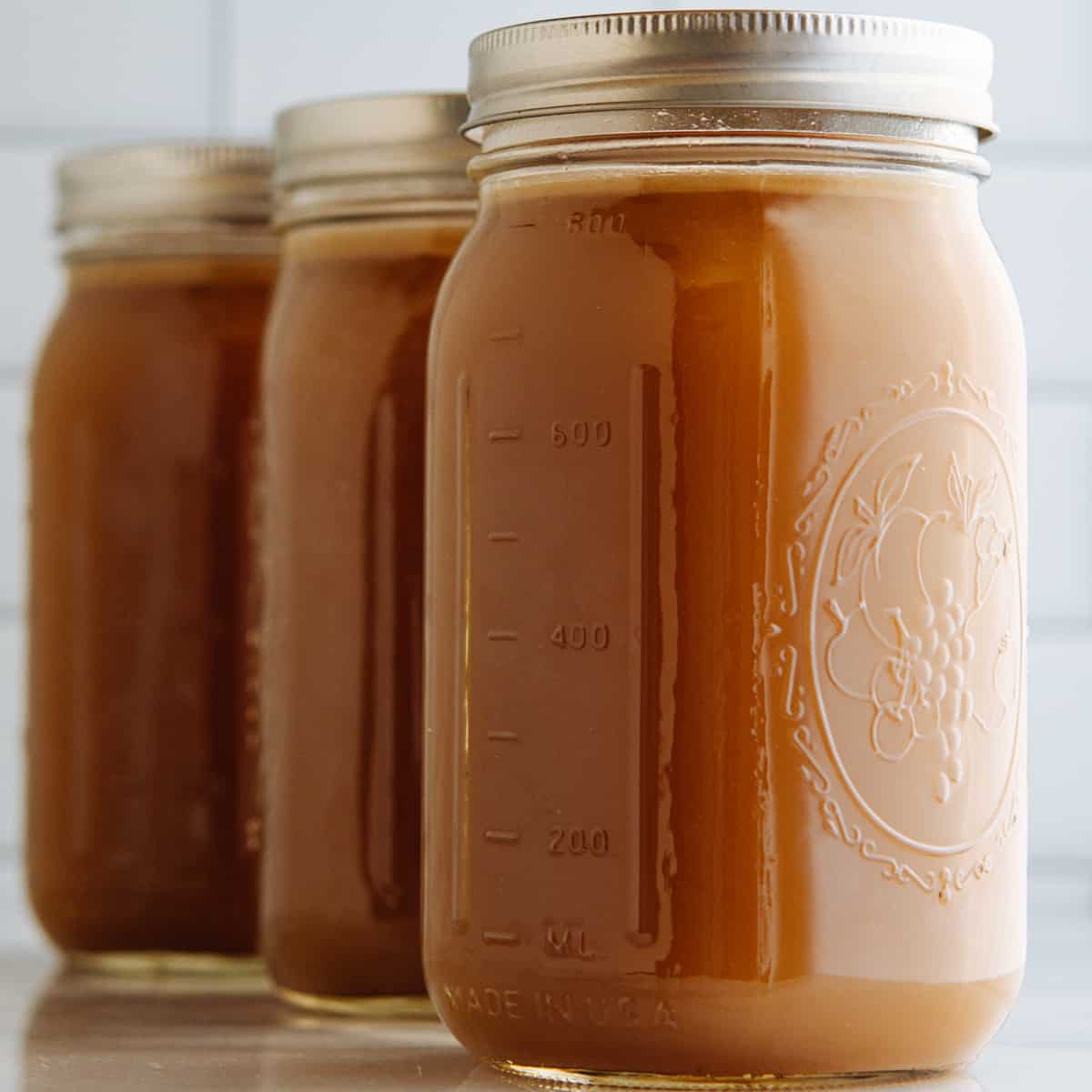
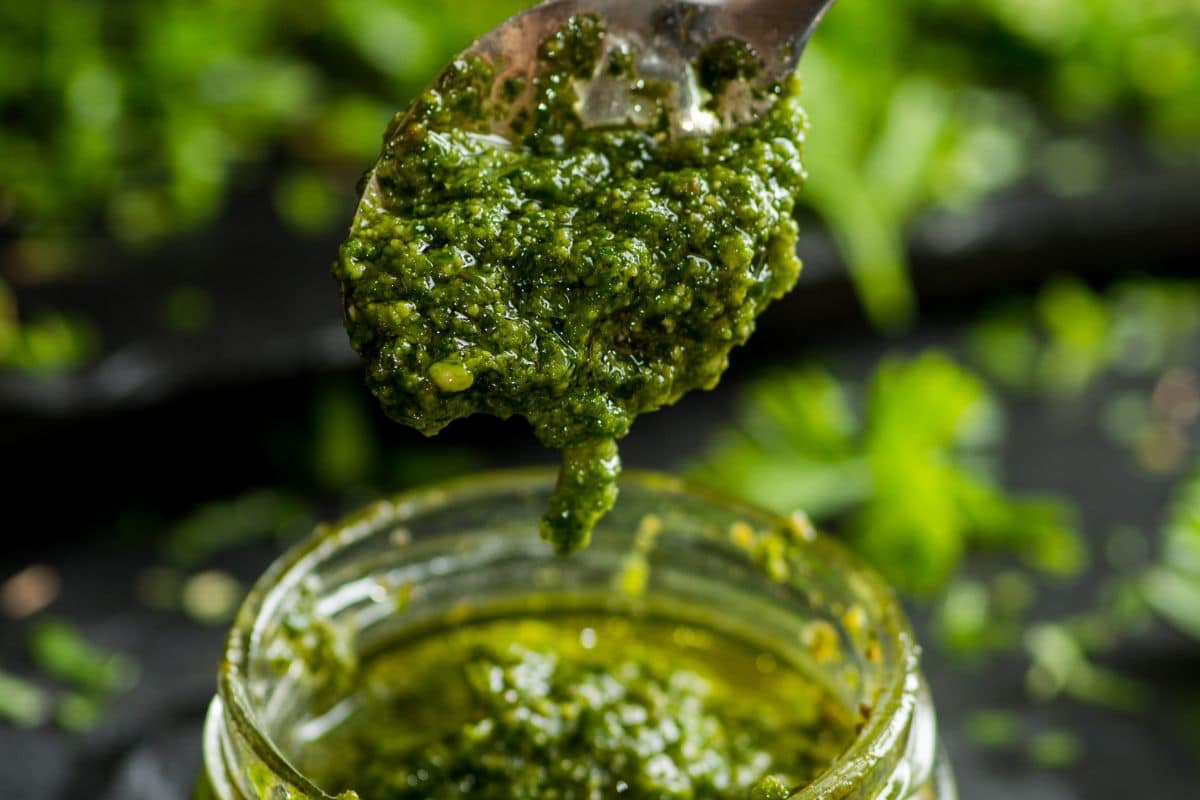
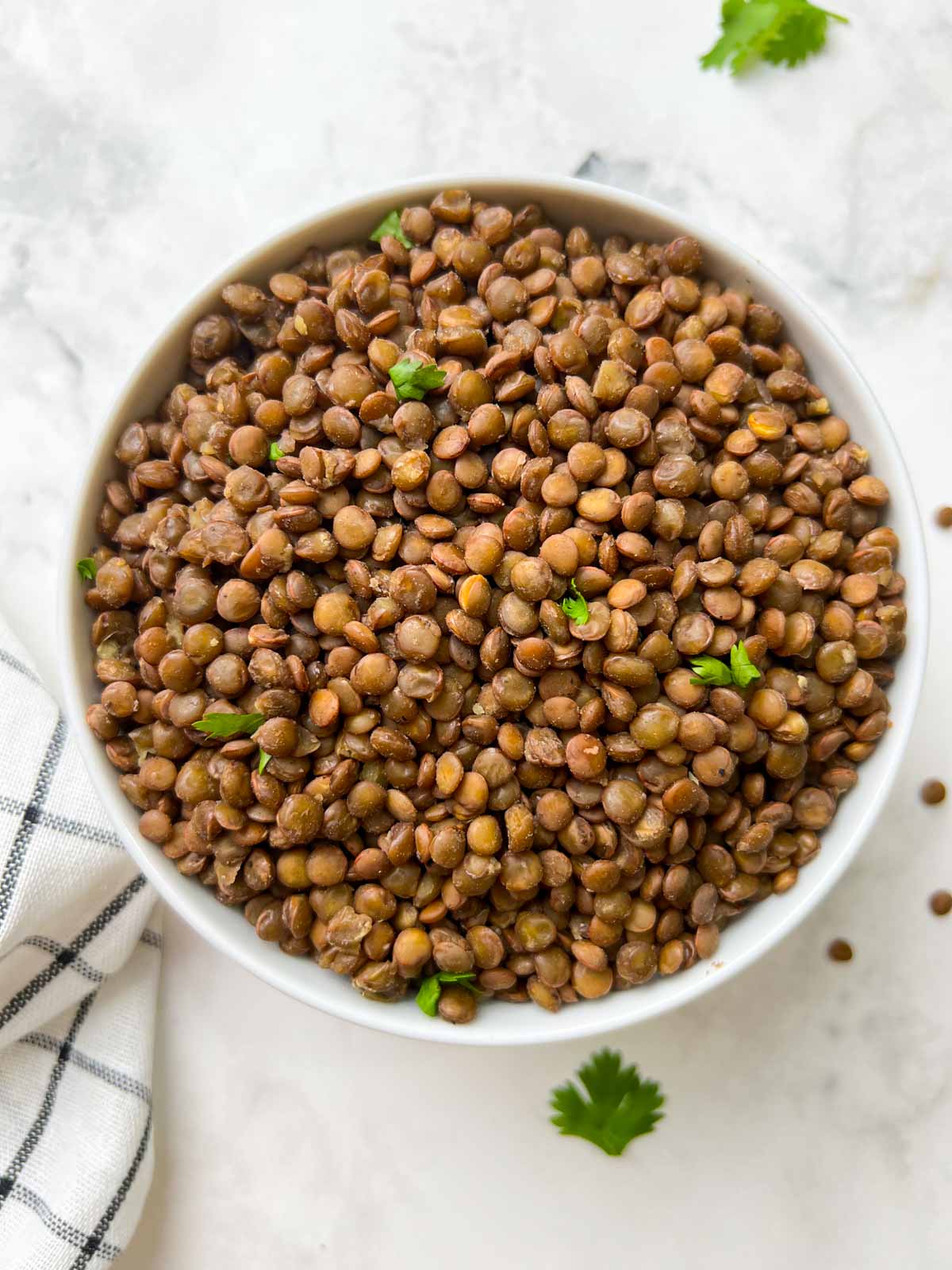
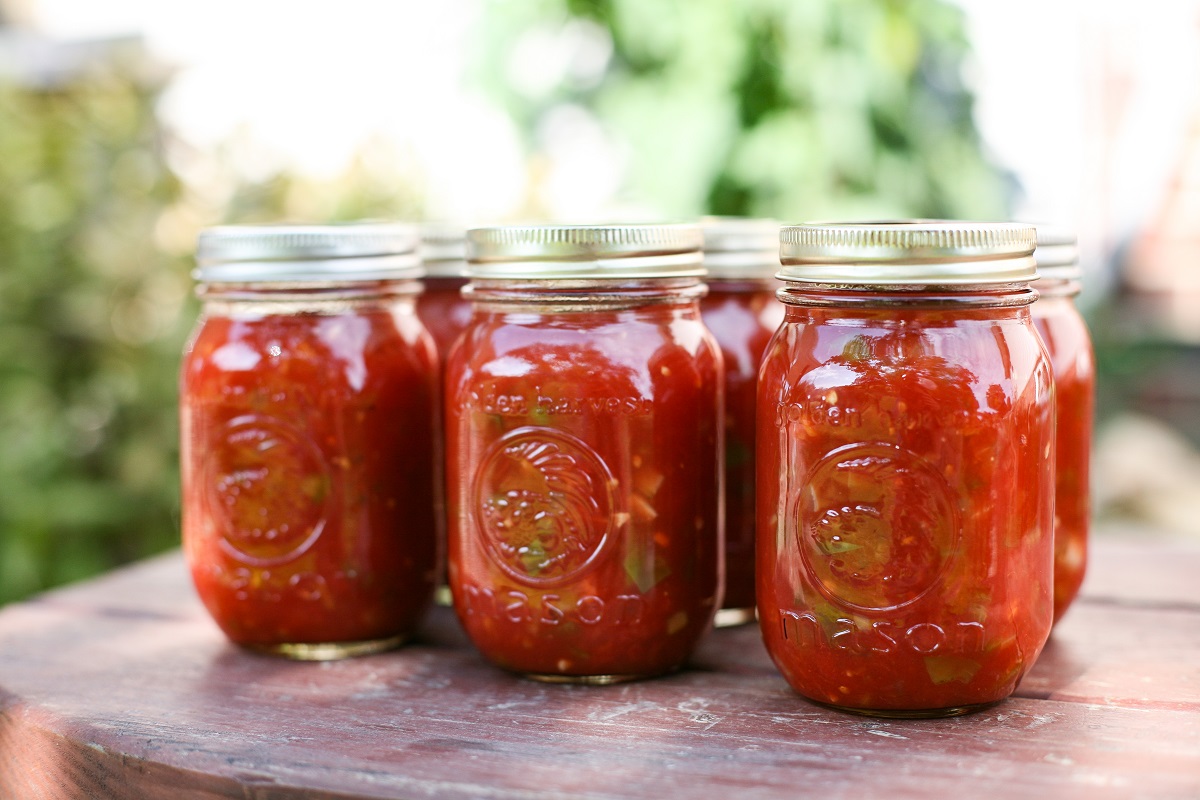

0 thoughts on “How To Store Cooking Utensils”